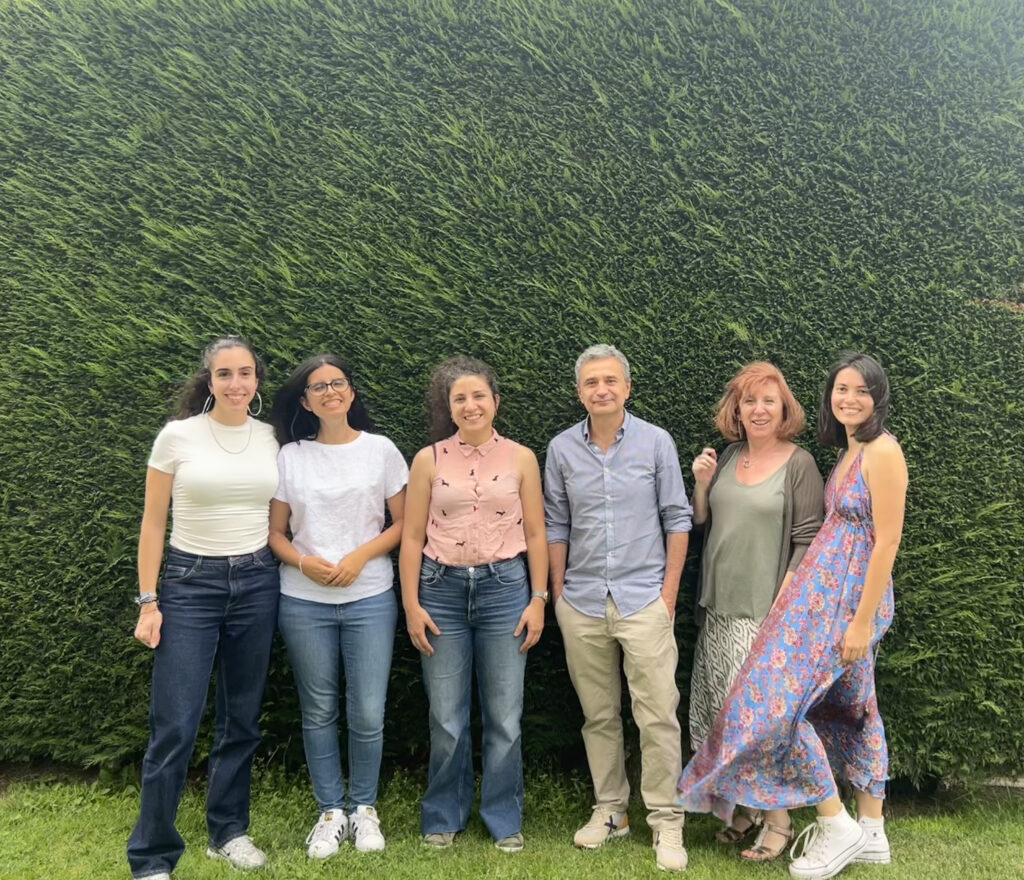NEUROBIOLOGY OF ADDICTIVE AND ANXIETY DISORDERS GROUP
NEUROSCIENCES AREA
Group coordinator
Researchers
- Inmaculada Pereda Pérez | mi.pereda.perez@ucm.es
- Rosa María Tolón Rafael | rosamaria.tolon@ufv.es
Predoctoral Staff
- Cristina Izquierdo Luengo | cristina.izqluengo@ufv.es
- María Ponce Renilla | maria.ponce@ufv.es
Research Summary
Anxiety-related diseases, especially phobias, panic disorders, and post-traumatic stress syndrome (PTSD), are characterized by resistance to fear extinction, or by inadequate responses to aversive situations. The current prevalence of anxiety disorders varies between 14% and 31% in developed countries, constituting, together with mood disorders, the most abundant psychiatric pathologies. At present, there is a clear need for the development of new, more effective and safer pharmacological tools for the treatment of anxiety disorders.
One of our main studies focuses on the orexinergic/hypocretinergic system. This system is constituted by two neuropeptides, orexins A and B (also called hypocretins 1 and 2), and their G protein-coupled receptors (OX1R and OX2R). Orexin-expressing neurons represent a small population located exclusively in the lateral hypothalamus. However, these neurons have extensive projections throughout the brain. Thus, orexins are involved in a great variety of physiological processes such as the regulation of wake/sleep cycles, ingestion, reinforcement processes and stress and, in recent years, they have gained a strong role in the regulation of emotional memory according to a dense projection of these neurons to different areas of the limbic system.
Our research group has studied during the last years the role of these neuropeptides in the regulation of addictive processes and emotional memory. Thus, we have shown that orexins are involved in the addictive properties of nicotine and cannabinoids. On the other hand, the involvement of the endocannabinoid system and the implication in aversive memories or psychotic-like behavior also takes special prominence in the aims of our studies. Our findings suggest that the manipulation of these systems could offer new therapeutic strategies for the treatment of anxiety disorders while exploring sex differences.
RESEARCH LINES
- Neurobiological mechanisms involved in fear regulation. Study of sex differences.
- Neurobiology of nicotine and cannabinoid addiction
- Physiological functions of orexins/hypocretins
- Effects of adolescent exposure to synthetic cannabinoids present in Spice/k2

Projects funded in recent years
- Project funded by the Ministry of Science, Innovation and Universities (MICIU) (PID2023-151223OB-I00) entitled: “Neurobiological factors underlying individual differences in fear extinction: a study in male and female mice” (2024-2027).
- Project funded by the Ministry of Science and Innovation (MICINN) (PID2020-116579RB-I00) with the title: “Study of the participation of 2-arachidonylglycerol and CB2 cannabinoid receptors in the regulation of aversive memories” (2021-2023).
- Project funded by the Government Delegation for the National Plan on Drugs (2019I024) with the title: “Adult neurobiological consequences of adolescent exposure to synthetic cannabinoids present in Spice/K2. Study in animal models considering gender differences” (2020-2022).
- Project funded by the Ministry of Economy, Industry and Competitiveness (MINECO) (SAF2017-85299-R) with the title: “Orexins/hypocretins and aversive memory: neurobiological mechanisms and potential utility in animal models of fear extinction resistance” (2018-2020).
- Project funded by the Government Delegation for the National Plan on Drugs (2014I019) with the title: “Exposure to cannabinoids during adolescence and its influence on the regulation of aversive and associative reinforcement memories: role of the hypocretinergic system” (2015-2018).
- Project funded by the Health Research Fund (13/00042) entitled: “Role of hypocretins/orexins in the consolidation and extinction of aversive memories” (2014-2016).
Publications
- Izquierdo-Luengo C, Ponce-Renilla M, Ten-Blanco M, Arnaz MA, Tolón RM, Pereda-Pérez I, Berrendero F. Long-term consequences of adolescent exposure to the synthetic cannabinoid AB-FUBINACA in male and female mice. iScience 28: 111857 (2025)
- Izquierdo-Luengo C, Ten-Blanco M, Ponce-Renilla M, Perezzan R, Pereda-Pérez I, Berrendero F. Adolescent exposure to the Spice/K2 cannabinoid JWH-018 impairs sensorimotor gating and alters cortical perineuronal nets in a sex-dependent manner. Translational Psychiatry 13: 176 (2023)
- Ten-Blanco M, Flores Á, Cristino L, Pereda-Pérez I, Berrendero F
Targeting the orexin/hypocretin system for the treatment of neuropsychiatric and neurodegenerative diseases: From animal to clinical studies.
Frontiers in Neuroendocrinology 69: 101066 (2023) - Ten-Blanco M, Pereda-Pérez I, Izquierdo-Luengo C, Berrendero F. CB2 cannabinoid receptor expression is increased in 129S1/SvImJ mice: behavioral consequences. Frontiers in Pharmacology 13: 975020 (2022).
- Ten-Blanco M, Flores Á, Pereda-Pérez I, Piscitelli F, Izquierdo-Luengo C, Cristino L, Romero J, Hillard CJ, Maldonado R, Di Marzo V, Berrendero F Amygdalar CB2 cannabinoid receptor mediates fear extinction deficits promoted by orexin-A/hypocretin-1. Biomedicine & Pharmacotherapy 149: 112925 (2022)
- Saravia R, Ten-Blanco M, Pereda-Pérez I, Berrendero F. New insights in the involvement of the endocannabinoid system and natural cannabinoids in nicotine dependence. International Journal of Molecular Sciences 22(24): 13316 (2021)
- Flores A, Maldonado R, Berrendero F. THC exposure during adolescence does not modify nicotine reinforcing effects and relapse in adult male mice. Psychopharmacology 237: 801-809 (2020).
- Saravia R, Ten-Blanco M, Julià-Hernández M, Gagliano H, Andero R, Armario A, Maldonado R, Berrendero F Concomitant THC and stress adolescent exposure induces impaired fear extinction and related neurobiological changes in adulthood Neuropharmacology 144: 345-357 (2019).
- Saravia R, Ten-Blanco M, Grande MT, Maldonado R, Berrendero F. Anti-inflammatory agents for smoking cessation? Focus on cognitive deficits associated with nicotine withdrawal in male mice. Brain, Behavior, and Immunity 75: 228-239 (2019).
- Berrendero F, Flores Á, Robledo P. When orexins meet cannabinoids: bidirectional functional interactions. Biochemical Pharmacology 157: 43-50 (2018).
